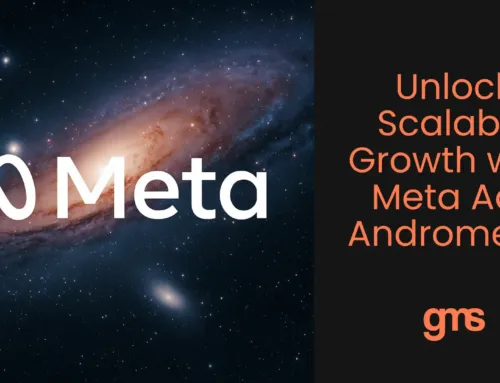AI Brand Replication: When Competitors Clone Your Voice, How Do You Defend and Scale?
You’ve probably noticed strange echoes of your brand voice surfacing online. A headline that reads like your tone. A caption that mimics your phrasing. AI brand replication is no longer theoretical. It’s an operational threat. As brands push harder into AI-generated content, the race isn’t just for reach. It’s for identity protection.
AI brand replication opens the door for competitors to mimic your messaging, dilute your market position, and profit off your originality. But here’s the shift: what seems like a loss of control is actually your gateway to strategic dominance. When you encode your brand’s essence into systems, teams, and tools, you don’t just protect your voice. You weaponise it.
The Silent Threat of AI Brand Replication
AI brand replication is happening in plain sight. Brands that once competed on product or service are now replicating voice, tone, and messaging at scale using generative tools. LLMs (large language models) can be fine-tuned on public content including yours. That social post you published last quarter? It may have trained your competitors’ next campaign. And most don’t even realise they’re doing it.
What makes this particularly dangerous is that AI brand replication doesn’t just affect marketing teams. It impacts trust, perception, and ultimately, revenue. The illusion of originality is powerful. When prospects see your message echoed by others, they may assume you’re just another player. That brand erosion, subtle and systemic, must be stopped at the source.
How LLMs Quietly Train on Your Voice
Large language models are trained on vast volumes of online content, including publicly accessible websites, social feeds, and published articles. If your brand is active and visible, it’s highly likely your tone and messaging style have already been scraped and absorbed into these systems. This means your competitors could be using generative AI tools that unknowingly regurgitate your brand’s unique voice, giving them unearned authority while eroding your distinctiveness.
Why Your Voice Is the New Intellectual Property
Your brand voice used to be a differentiator. Now, it’s an asset that needs defending. In an AI-saturated market where tone can be mimicked at the click of a prompt, voice becomes intellectual property, an expression of authority and ownership. This isn’t a branding problem. It’s a data integrity problem.
When you treat voice as IP, you don’t just protect it. You encode it, systemise it, and ensure it scales without distortion. That reframing turns something as intangible as tone into a scalable advantage. Because when your competitors are copying, you’re already evolving.
Your Voice Is the Only Thing They Can’t Automate
While anyone can mimic surface-level style or copywriting tricks, they can’t authentically replicate the values, intent, and depth behind a true brand voice. Voice is more than sentence structure or catchphrases. It’s about emotional cadence, mission-aligned language, and unconscious rapport-building. This level of authenticity can’t be reduced to data patterns and reused without feeling hollow. That’s why your voice, when engineered properly, becomes the one thing artificial intelligence can’t counterfeit.
Weaponising Authenticity as Your Moat
Authenticity is no longer a virtue. It’s an operational strategy. When competitors are cloning, the only defence is to go deeper into yourself, your values, language patterns, embedded beliefs. That’s where the moat is built. And it’s how brands move from defensiveness to dominance.
AI brand replication can’t touch the layers beneath the surface. Embedded commands. Subtle reframes. Pattern interrupts. These aren’t tricks. They’re your brand’s fingerprint. When you embed these at every touchpoint, competitors don’t just struggle to mimic. They reveal themselves as imitations.
Tactical Content Differentiation Through NLP
To make your voice unreplicable, layer your content with strategic neuro-linguistic markers such as double binds, embedded suggestions, and metaphoric framing. These techniques not only build unconscious rapport with your audience but also create a signature communication style that AI cannot authentically replicate. This subtle fingerprint ensures that your content resonates in ways no algorithm can reproduce, while reinforcing your authority and emotional connection in every interaction.
Ready to make your brand voice uncopyable? Book your strategy call now.
How to Protect Your Voice in an AI-First Market
Defending against AI brand replication starts with a clear protocol. First, watermark your brand’s linguistic DNA. What sentence patterns are unmistakably your own? Which metaphors do you possess? What rhythm sets your tone apart? Codify this. Make it trackable. Make it enforceable.
Then, deploy AI defensively. Use detection tools that scan for voice cloning across digital platforms. Monitor suspiciously familiar phrasing. Build legal protocols into your terms of use. AI gave competitors the tools to copy your voice. Now it gives you the tools to catch them.
Build a Language Watermark
Establishing a language watermark means identifying and codifying the distinct elements of your voice, including cadence, sentence rhythm, unique phrasing, and stylistic motifs. These elements should be formally documented and integrated into internal brand guidelines, style guides, and AI prompts so that any team member or tool can execute them with precision. When your voice is recognisable by structure alone, imitation becomes obvious and defensible.
Scaling Identity Without Losing the Signal
Authenticity must scale without dilution. If your voice breaks the moment your team grows or AI starts helping you write, you don’t have a brand voice. You have a bottleneck. The goal is operational identity, where tone, strategy, and soul are codified into every execution.
Frameworks like The Amplify Method™ allow teams to scale content while protecting brand DNA. Whether it’s human-written, AI-assisted, or hybrid, every output should reflect your strategic core. Identity isn’t something you maintain. It’s something you reinforce by design.
Systemise the Inimitable
Scaling authenticity requires building systems that don’t just replicate tone, but protect its intent. Document your narrative structure, value hierarchy, and linguistic markers inside content frameworks and brand playbooks. Train internal teams and AI assistants with these rules, so that execution stays aligned even as production expands. When identity is engineered, it becomes modular, repeatable, and defensible at scale.
What is AI replicate?
AI replication generally refers to the use of artificial intelligence systems to mimic or reproduce patterns, behaviours, and outputs found in human-created data. In marketing and branding, this can involve replicating writing styles, tone of voice, or even entire brand personas using large language models (LLMs). These models learn from public data, meaning that high-volume content producers often unknowingly train the very systems that replicate them.
AI brand replication is a specific and more strategic subset of this idea. It describes how brands, often competitors, use AI to copy a business’s tone, messaging cadence, or style to gain unfair traction or credibility. This raises real challenges for companies trying to maintain brand integrity and trust, especially when what’s being replicated is the emotional and psychological layer of their identity. Without protective measures, brands risk losing their most valuable differentiator: authenticity.
How is AI used in branding?
AI is commonly used in branding to generate content, analyse customer data, personalise messaging, and optimise campaigns at scale. From email sequences to video scripts, AI tools can produce on-brand assets faster and cheaper than manual efforts. However, this convenience introduces new risks when AI starts to mimic not just generic tone, but the specific nuances of another brand, opening the door to AI brand replication.
AI brand replication emerges when a competitor’s content becomes eerily similar to yours in tone, phrasing, or emotional appeal. It’s not accidental. It’s the result of machines learning from your public content and reusing it in different contexts. This puts the onus on brand owners to proactively differentiate their voice with strategic linguistic cues, neuro-linguistic layering, and watermarking techniques that AI cannot replicate convincingly.
Which AI tool is best for branding?
The best AI tools for branding depend on the brand’s goals, but popular options include ChatGPT, Jasper, Copy.ai, and Writer. These platforms help generate content, brainstorm ideas, and maintain stylistic consistency across digital assets. Yet, their accessibility also fuels the issue of AI brand replication, where multiple brands start to sound the same, or worse, one brand is cloned by another using AI-generated content.
To counteract AI brand replication, businesses should use tools that allow for custom training or prompt frameworks that reflect their unique tone and values. Open-source models or private fine-tuning capabilities can help maintain control. Ultimately, the best AI tools for branding are not just the most powerful, they’re the ones that help you preserve your authenticity in an ecosystem that increasingly rewards speed over substance.
Ready to make your brand voice uncopyable? Book your strategy call now.
Can AI replicate creativity?
AI can simulate creativity by remixing existing content patterns, but it doesn’t originate from lived experience, emotion, or human insight. What appears creative is often a clever recombination of previous inputs, which means AI-generated ideas lack the depth and context of authentic creativity. This is particularly important in the branding world, where emotional resonance drives connection and conversion.
AI brand replication proves that simulated creativity is not the same as genuine brand expression. While AI can produce convincing content that looks and sounds creative, it fails to create original meaning without human input. Brands that rely solely on AI risk sounding generic, while brands that embed intentionality, identity frameworks, and NLP tactics stay ahead, because what’s engineered with purpose can’t be copied by pattern alone.
Trust and Authority: GMS Media’s Response to the AI Identity Crisis
GMS Media Group doesn’t just protect brands. We design moats. Our strategies are rooted in identity, weaponised through Tactical Neuro-Linguistics, and engineered to outlast AI mimicry. With over $1B in tracked revenue, we’ve helped brands turn their tone into a competitive edge that no algorithm can replicate.
We don’t just help you defend. We help you dominate. Because when your voice becomes uncopyable, your market position becomes untouchable.
What To Do Next
Once you recognise the risks of AI brand replication, you’re faced with two choices. Either leave your voice exposed or fortify it into an asset that scales. If you’re ready to turn your identity into your strongest defence, let’s build the moat together. You can let competitors sound like you. Or you can sound like no one else. The decision shapes your next 12 months.
About the Author
GMS Media Group is Australia’s leading performance marketing agency for mid-to-enterprise brands. We combine expert media buying, strategic funnel design, and revenue-grade analytics to help you win in competitive markets.
Want to build an identity no AI can clone? Start the strategy call today.




